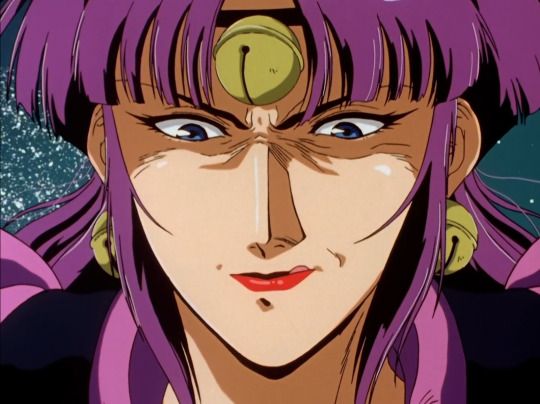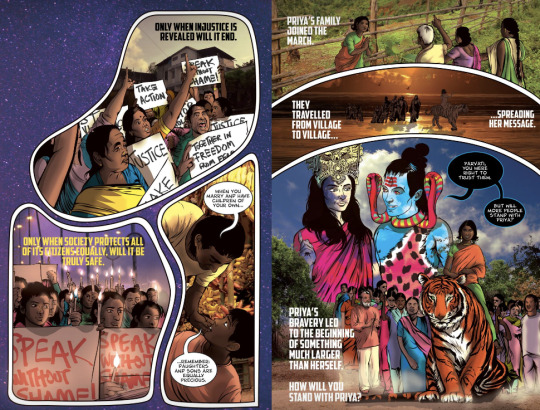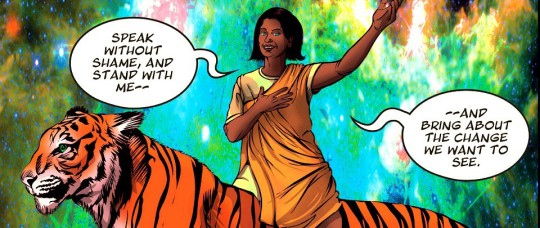#shakhti
Explore tagged Tumblr posts
Text





I'm so normal about her guys I promise
#i assure you the expression matches what shes doing aka terrorizing uso while hes desperately looking for shakhti#fuala griffon#victory gundam#gundam
11 notes
·
View notes
Text
A Russian journalist has been found dead near a highway in the Rostov region just days after slamming the Kremlin’s “reconstruction” efforts in the Ukrainian port city of Mariupol, which was obliterated by Russian troops who claimed to be “liberating” it.
Alexander Rybin, 39, freelanced for pro-Kremlin media outlets while working for the left-wing outlet Rabkor. His body was found Sunday near the city of Shakhty, with investigators immediately dismissing any suspicions about his death in comments to state-run media and claiming that he’d died of cardiomyopathy, a disease of the heart muscle.
“What happened to him is unknown. And perhaps we will never know the whole truth about this story. Sudden death from natural causes? Sasha did not give the impression of being sick and never complained about his health. And if he was killed, then who did it, why and how?” Rabkor wrote in announcing his death.
4 notes
·
View notes
Text
Monday 10th June 2024, Shakhty, 8.41pm.
#174,475 — A man assumes his brother’s identity as a doctor to avoid a speeding ticket. The only stories they have to tell to their families speak of hunger, misery, and useless bloodshed. It transforms her into a genius.
0 notes
Text
Exporter of Heavy Duty Conveyor in Russia

Exporter of Heavy Duty Conveyor in Russia: A leading Manufacturer, Supplier, and Exporter of Heavy Duty Conveyors. Established in 1985 in Phase III, Vatva, Ahmedabad, Gujarat, India, the company specializes in pharmaceutical machinery. Laxmi Pharma Equipment offers a comprehensive range of high-quality equipment, including Washing Machines, Filling Machines, Stoppering Machines, Capping Machines, Labelling Machines, Packaging Machines, Process Equipment, and more. Heavy-duty conveyors have significantly influenced the pharmaceutical sector by enhancing efficiency, safety, and overall productivity. These conveyors operate by utilizing a motor to drive a belt or chain, facilitating the movement of materials or products within a facility. Features: Durability: Built with durability in mind, ensuring longevity in demanding industrial environments. Handling Capacity: Engineered to handle substantial weights, making them suitable for transporting large and heavy products or materials. Variety: Available in various types, including belt conveyors, roller conveyors, and chain conveyors, catering to different material handling needs. Customization: This can be customized to fit specific requirements, offering flexibility in design and functionality. Variable Speed Control: Many heavy-duty conveyors feature variable speed control, allowing operators to adjust speed based on production or processing requirements. Directional Movement: Capable of moving materials in different directions (forward, reverse, incline/decline), providing flexibility in material flow. Ease of Maintenance: While robust, these conveyors are designed for easy maintenance, with accessible components like bearings and belts for inspection and replacement. Geographical Availability: Laxmi Pharma Equipment Exporter of Heavy Duty Conveyor in Russia, covering cities such as Moscow, Saint Petersburg, Novosibirsk, Samara, Omsk, Veliky Novgorod, Seversk, Norilsk, Murmansk, Belgorod, Novorossiysk, Arzamas, Kineshma, Derbent, Novoshakhtinsk, Shakhty, Vladimir, Velikiye Luki, and Kovrov. For inquiries and information, feel free to contact us. Read the full article
#Arzamas#Belgorod#Derbent#Exporter#ExporterofHeavyDutyConveyorinRussia#HeavyDutyConveyor#Kineshma#Kovrov#Manufacturer#ManufacturerofHeavyDutyConveyorinRussia#Moscow#Murmansk#Norilsk#Novorossiysk#Novoshakhtinsk#Novosibirsk#Omsk#Russia#SaintPetersburg#Samara#Seversk#Shakhty#SuplierofHeavyDutyConveyorinRussia#Supplier#VelikiyeLuki#VelikyNovgorod#Vladimir
0 notes
Photo

Chemical Plant Explosion in Southern Russia Injures 9 Nine people were injured in an explosion and fire at a chemical plant in southern Russia’s Rostov region, authorities said Wednesday, less than a year after the plant's opening. Security camera footage captured the moment when a huge explosion ripped through the Shakhtinsky Polyester Plant in the town of Shakhty. Read more | Subscribe to our channel
0 notes
Text
Critic of Vladimir Putin found dead after vowing to shed light on 'gigantic corruption'
Mirror UK By Will Stewart – Russia Correspondent and Zahra Khaliq – Trainee Reporter15:40, 9 Jan 2024 A Russian war journalist who vowed to reveal new details of a ‘gigantic corruption’ in the Putin-invaded Ukrainian city Mariupol has been found dead. Alexander Rybin’s body was discovered by a roadside near Shakhty, in Russia’s Rostov region – making him the latest in a string of mysterious…

View On WordPress
0 notes
Text
What Makes an Iconic Warrior?

If someone calls you ballsy, know it all, defiant, then you're in good company.... Joan of Arc was all of that and more, so take that as a compliment. Men should take a page out of her book and learn how to be a real leader, because this girl, literally--she was a teenager when she became a military leader. Most girls at her age were on their road to being betrothed or living a submissive life with no future prospects of her era. A young woman to DISCOVER She referred to herself as Jehanne la Pucelle or Joan the Maid. In researching this era this signified that she not only of a lower stature of means but she was also a virgin. This distinction was held in high regard in society as this was the expectation before marriage for all young girls and that was it.
Born in 1412, here fate at 17 was to not just marry the guy next door, but to lead her nation's army into battle. Wait, what?!!! At 17, I was in high school and consumed with worry about acne!
Her fate was destined to aid in the revolution of a nation defending its territory. With absolutely no military training, she was convinced that she, acting under the guidance of the divine was destined to take charge of the French army and defend her nation--the besieged city of Orle'ans, where she did achieve a victory and ultimately in the goal to crown Charles VII. Eventually, she was captured by troops loyal to John of Luxembourg and handed over to forces loyal to English King Henry VI. Tried and condemned to be burned at the stake in May of 1431 at the age of 19, she was considered a witch but considered one of history's greatest martyrs and became the patron saint of France. It was because of her mental and physical courage with her claim to have direct communication with the divine, that made her exceptional. Her character and her connection to God, was beyond the typical ministrations of priesthoods and apart from the constraints of typical church institutions. It was heresy to speak of having direct contact with God (the divine) Only Men were known to be given this direct access to God and only those considered high in the order of the priesthood could claim that right. Here was this young woman who gave an example of what we know today as awareness, consciousness, spiritual connectedness and in the end, she awakened the spirit of the French and created a revolution.
Another woman to READ is Priya's Shakhti. I have never heard of this graphic novel before but scrolling through one of my favorite actresses, Mindy Kalin's Instagram, who is an advocate and producer for women empowerment supports this series and advocacy work immensely.
instagram
This graphic novel is a provocative visual and visceral answer to illuminate the brutal and often fatal cultural gender bias in New Dehli. Myths of a country and society can create such a stranglehold on progression that it becomes fact. When in reality the truth, what people fear, eventually a fatal cancer has no choice but to become uncovered. Such is the case in New Dehli and the attitudes toward women. "The problem of gender violence is not a legal problem, but a cultural problem."
The answer in many parts of these regions is to blame the victim. Impose restrictions and force such suppression that the inclination is not to protect the female population but to fault, shame and enact violence against them. In some cultures, and societies, the woman is revered, protected. The irony in this instance is that deities representing women have more power and reverence than the actual living breathing real women. According to the statistics of the WHO regarding gender-based violence in New Delhi the findings are atrocious.
A highly publicized gang rape on a bus in December 2012 outraged India and the world. Out of it, a movement to highlight the dangerous gender-based bias towards women arose through an innovative social multimedia project. Ram Devineni who is an Indian American film maker was inspired to create Priya Shakti in response to this attack. Consulting with several philosophers, activists, and poets, he ultimately collaborated with an American designer whose focus is on the comic book genre to create this powerful graphic novel. What is innovative about the project is that it is also available for free download targeted towards the younger generation in an attempt to open the conversation of sex, boundaries, respect and a woman's autonomy. The storyline focusing on Priya who is a human woman and a devotee of the Goddess Parvati, who has herself experienced a brutal rape and the social isolation that often stems from such a heinous act. It takes the brutal reality and flips it on its head in the form of comic book reality that is universal to understand and connect to. It is with this hope that progress can be made culturally through various media channels and reach younger generations to educate them out of the antiquated ideas towards women: culture changes faster than genes"
"Speak without shame and stand with me and bring about the change you want to see."



In the aftermath of March for our lives in 2018 these speeches by young activists Emma Gonzales and Naomi Wadler have opened the gates for young women to speak up against violence in all forms. Their message was powerful then and still resonates just a few years later unfortunately today as the violence in America has increased exponentially. Their experiences and speeches have inspired young women to create movements through art, multimedia and music in order to keep the important message of unity in numbers and allowing your voice to be heard as a young woman. Above is a beautiful [painting inspired by artist Corina Karstenberg of Naomi as a form of giving space to representation. It is quite stunning. There is even now a new exhibit titled "Girlhood" at the Smithsonian commemorating women suffrage. Proof that one voice can start a revolution, but many voices can help to win the battle.
0 notes
Text
Week 10
1. How would you define the Warrior Girl Icon based on the examples in the PDF series? What icons would you add?
I believe that the Warrior Girl Icon does not conform to world and roles being pushed upon her. She stands up for what she believes in even if that means having a long fight of opposition against her. She does not let fear hinder her, she looks it straight in the eye and walks past it. The Warrior Girl Icon is unrelenting and demonstrates physical and mental strength. She leads and takes pride in her female identity. One of my favorite girl warrior icons is Aibileen Clark in The Help. Despite the fear of getting fire, arrested, or killed, Aibileen speaks up about the horrid and racist experiences she has gone through as a housekeeper in white households for most of her life in a book being written by a white ally. In speaking up, she encouraged dozens of other housekeepers to speak up about their experiences as well, ultimately ending with a book filled with testimonies that exposed the racism in Mississippi during the height of the Civil Rights Movement.

2. READ Priya's Shakhti graphic novel, watch the videos and write a review (3-4 paragraphs) on your blog.
Include reference to these concepts:
"The problem of gender violence is not a legal problem, but a cultural problem."
"Culture changes faster than genes."
"Speak without shame and stand with me and bring about the change you want to see."
Priya's Shakhti is a powerful graphic novel. It was refreshing to see a story that actually reflects the troubles women around the world have to face when it comes to sexism and GBV. Often, many of the horrid acts and hardships women have to endure are watered down in storytelling because they aren't "appropriate" for children (in my opinion that is just an excuse, and really companies just care about profit and don't want to release anything that might tarnish their brand image) this is prominent in many Disney animations and other graphic novels such as Baby Mouse.
The graphic novel addresses the fact that gender violence is a cultural issue. We live in a society where men view themselves as more than women. When crimes against women are committed we are blamed and are told to get over it. The other day, while I was at work (as a wedding server) a male guest in his late 60's walked straight into me and held on to me for a second and then touched my butt before walking away. When I went to my supervisor to notify her that I was touched inappropriately by a guest, she said "that will happen to you", other female waitresses agreed saying "men will be men." It infuriated me that this was the response and was shrugged off so effortlessly. But I suppose it wasn't my supervisor or other women severs' faults, this is just the mentality that has been engrained in our culture, women are told it's "no big deal." But it is and that's why we have to work together as fellow sisters to change the narrative.
Culture can and will change faster than waiting on people's genetic make up to change and hope they are different. We as a collective have to come together and change this engrained mindset. If the masses are bringing awareness to GBV and sexism and doing everything in their power to condem it and educate people against it then eventually the societal mindset will shift. The quote "speak without shame and stand with me and bring about the change you want to see" says it all. If we want to see change we need to speak up without fearing what may happen. When ones speaks up it encourages others to do the same. If everyone is enraged and speaking out about the same thing, that is when change happens.

3. Watch the speeches by Emma Gonzales and Naomi Wadler. How do these speeches resonate four years later in the aftermath of March for Our Lives (March 2018)?
What continues to be breakthrough and change-making about these speeches? What has changed?
How has their presence on the public stage at that time and since then expanded the definition of a fearless 'Warrior Girl'?
These speeches are still extremely relevant today. Gun violence is still a major threat in everyone's lives. Mass shootings are still regularly happening. There have been almost 40,000 deaths caused by gun violence in the U.S. this year. We are still fighting for our lives. These speeches are extremely emotional because they recognize and say the names of those who lost their lives due to guns. They make it clear that lives matter, and those who lost them are not just some statistic. Emma Gonzales's speech was especially effective as she was silent for half of it equaling the exact amount of time the shooting at her school lasted for. The silence was uncomfortable, emotional, and impactful. Both these girls are Warrior Girls. They stood up in front of millions of people and spoke up on something others are afraid to do. They called out issues with gun legislation and brought awareness to something to effects so many people. They have been unrelenting in their fights against gun violence and continue to be activists today.

0 notes
Text
Priya's Shakti and Warrior Girls
1. How would you define the Warrior Girl Icon based on the examples in the PDF series? What icons would you add?
The Warrior Girl Icon hears her higher calling and uses her skillset to make the world around her a better place. Whether through intellect, magic or physical ability, she rises above adversity to ‘fight the good fight.’ This call may not always seem easy and she may upset a few people around her along the way *cough cough* MEN - But she stands strong, holds her resolve and reminds those around her that they are capable of doing better, and with her leadership, she will make that point clear.
I recently viewed House of the Dragon on HBO and I chose Rhaenyra Targaryen to be added to the list. Rhaenyra is fully aware of the resistance that she will face as she ascends to the Iron Throne upon her father’s death. At every turn, she is reminded that she is incapable of being an effective ruler purely because she is a woman and that her place is to pour wine for men and to procreate. What I loved about this role is that she stood strong in her position because it is her birth right and her being a woman has nothing to do with it. In an interaction with her cousin, she was told that the realm had an opportunity to have a queen but rejected it. Rhaenyra tells her cousin “they rejected you”

I don’t love getting political in these discussions but Alexandria Ocasio-Cortez is a great example for this discussion. She stands firm in her politics and is not afraid to make waves. She reminds us that her generation is the next in line for changemakers on the larger stage of politics.

2. READ Priya's Shakhti graphic novel, watch the videos and write a review (3-4 paragraphs) on your blog.
Priya’s Shakti focuses on the violence that women face on a daily basis. The social norms for women are that they are meant to be home to raise the kids and cook for their husbands. Their main currency is to not go to school, but to procreate. As Priya’s dreams of being a teacher are ripped away from her, she is forced into this cycle. After Priya is raped, she is cast from her home by her father and is forced to live in exile. She prays to the goddess Parvati for help and a quest for women’s equality begins.
The problem of gender violence is not a legal problem, but a cultural problem: The fact that certain cultures don’t fully accept this concept is heartbreaking for me. There are cultures where women are not treated as equals to their male counterparts. Their roles are to clean, cook and take care of the children while the men of the house go out and work. Because these beliefs are so strong, any time a woman would step out of this mold would incite violence from the men in their life.
Culture changes faster than genes: Men need to realize that giving women an education and allowing them to work and develop the skills that are afforded to men will only help them in the long run. The idea that a woman must give her husband a child needs to change from ‘it’s their duty’ to ‘it’s their choice’ and should they make that choice, it’s for them and is a gift to her husband.
Speak without shame and stand with me and bring about the change you want to see: Women stepping up in politics to share their stories and spread the message of inequality is going to lead this country in a positive direction. #Metoo is a great example of women coming forward and letting the world know of the terrors that they have experienced. What’s especially sad is that there have been stories shared of this nature but no one was there to listen. As heartbreaking as it is to hear, we need these stories to inform the changes that need to be made in order to secure women’s rights.
3. Watch the speeches by Emma Gonzales and Naomi Wadler. How do these speeches resonate four years later in the aftermath of March for Our Lives (March 2018)?
I have seen these speeches a number of times and I think that today, with mass shootings and women’s rights being taken away, they resonate so deeply. I currently live in Buffalo, Ny and yesterday, 11/14 was six months since the Buffalo massacre. We still turn the tv on and are hearing about mass shootings in colleges and black and brown lives being taken away on a daily basis. How come we have not learned our lesson? What needs to happen for true and lasting change to be put into action?
What continues to be breakthrough and change-making about these speeches? What has changed?/ How has their presence on the public stage at that time and since then expanded the definition of a fearless 'Warrior Girl'?
Older generations have shielded young people from the truths and dangers of the world because maybe they feel that they don’t want to ‘corrupt’ them or ‘they are too young for that’ - As a result, there is an added pressure on young people to make the changes that are not being made for them. This makes me think of Greta and her “How Dare You” and “you’ve robbed me of my childhood” remarks in many of her speeches. This is the same idea. There are children who are quite literally dying and now others are being traumatized to a point where they are begging for someone to help them. Having young people, especially young women speak on these topics lets us know that we have failed. We have failed to protect our children and things need to be done. Young women have been conditioned to think that this is a man’s world and they should stay silent, but with every speech and every cry, this is changing and it’s pretty special.
0 notes
Text
Week 10 - Priya's Shakti and Warrior Girls
1. How would you define the Warrior Girl Icon based on the examples in the PDF series? What icons would you add?
The Warrior Girl Icons are the revolutionary woman and make the female warrior a prominent investigation site for discourses surrounding female power and gender roles in society. Women warriors have been taken up as a symbol of feminist empowerment, emphasizing women's agency and capacity for power instead of the familiar pattern of female victimhood. It’s a dilemma that girls have faced for centuries. Dictated by society to be a princess or delicate flowers, girls have faced a world that does not expect – or even want – them to be strong warriors. Yet history and pop culture hint that there are far more warrior women than we have been led to believe. Xena is the main character in the television series Xena: Warrior Princess. Born in the city of Amphipolis in Ancient Greece, Xena travels around Greece, using her fighting skills and strength to help people. The male-dominated world of Ancient Greece has been imagined as a world where two women can be independent and fight (physically and emotionally) on the same level as men. Xena’s defiance of expectations placed on women is demonstrated by her role as a warrior. Still, her style continues the idea that women should be attractive, even if they are fighting. However, her muscular and strong beauty provides a realistic character, much like Katniss Everdeen in the Hunger Games films – a body that can undertake the demands of an active and adventurous life of survival.

2. READ Priya's Shakhti graphic novel, watch the videos and write a review (3-4 paragraphs) on your blog.
Inspired by the tragic events of the gang rape and murder of a female student on a private bus in Delhi in December 2012, the people behind Priya’s Shakti wanted to tell a story that would spur people to action in protesting against the violence inflicted on women. Instead of using a generic approach to telling of the rape of a village girl, Priya’s Shakti shows how the Indian gods like Shiva and Parvati were so outraged by men’s inhumanity that a war of the gods ensued on Earth. Its devastation was averted only by the grace of Priya, the rape victim who decided to spread a message of peace and hope rather than a message of revenge and violence.

The graphic novel beautifully ties together mythological imagery and powerful statements. "The problem of gender violence is not a legal problem, but a cultural problem." A cultural shift had to happen, especially in the views towards the role of women in modern society. Deep-rooted patriarchal views needed to be challenged. For many rape survivors, it can feel impossible to seek justice when their lives are constantly threatened after they report the crimes against them. Families, local communities, and even police discourage women from pursuing criminal action against their attackers. The burden of shame is placed on the victim and not the perpetrators and creates a level of impunity among men to commit more rapes. This comic book creates empathy and identification with rape survivors so they can pursue justice without shame.
"Culture changes faster than genes." The most crucial thing emphasized in the comic book is that change is possible. Trying to create a cultural shift is incredibly difficult but not impossible. "Speak without shame and stand with me and bring about the change you want to see." Priya's Shakti demonstrates how the overarching culture can begin to change incrementally through the will of warrior girls and the spread of education to their male counterparts. The goddess Parvati's male equal, Shiva, was so revolted with humanity after learning out about Priya's rape that he ordered the death of humanity -- a very barbaric and generally patterned masculine response to this kind of wickedness. The perseverance of Priya and the goddess within her impacts the culture, which is ultimately what is needed for change, as all women have this energy within themselves.
3. Watch the speeches by Emma Gonzales and Naomi Wadler. How do these speeches resonate four years later in the aftermath of March for Our Lives (March 2018)?
Emma Gonzales and Naomi Wadler are courageous young women who have had the ability to become prominent heroes in the fight for gun safety. The nationwide “March for Our Lives” was the first step toward more productive conversations on gun control. That this massive display of unity was organized, inspired, and primarily led by teenagers is as impressive as it is inspiring. The challenge now is for this new generation of change-seekers to keep up pressure on those in office to enact the type of common-sense gun laws that can reduce all-too-common mass-casualty shootings. Four years later, there has been broad public approval of new gun laws as President Joe Biden signed the Bipartisan Safer Communities Act into law on June 25, 2022. However, many are still in opposition to joining the fight for gun control. There is still work that must happen to influence lawmakers and the American people. Emma Gonzales and Naomi Wadler are the perfect examples of how to go create this influence head-on. Gun-related violence threatens our most fundamental human right, the right to life. Today, the term “Warrior Girl” has evolved into its own archetype. Whether young or old, these women are empowered and claim the “Warrior Girl” title in ways we’ve never seen before. Their voices are a testament to how women achieve greatness by standing their ground and pushing for change.

0 notes
Photo

The world's second-tallest statue of the Hindu god Shiva (Murdeshwar, India).
Shiva is the god who destroys the universe so that a new one can be born. He is often depicted as the lord of the dance, a fearsome warrior, and a lone ascetic. Parvati, his consort, is the benign form of Shakhti, the female aspect of cosmic energy.
#history#architecture#sculpture#hinduism#indian architecture#indian sculpture#india#murdeshwar#shiva#parvati#shakhti
14 notes
·
View notes
Photo

Abey kitni baat karoge 💝 #negiup #shakhti (at Negiup ProductIons) https://www.instagram.com/p/B_m6rxBnyva/?igshid=1dsxzptn7okiq
0 notes
Video
🔊Посмотри на эти страницы 👇. 🔊 @sever_auto_61rus ..👈 SEVER AUTO 🔊 @avto_svet_shakhty _.👈 Авто Свет. 🔊 @sever_moto_61rus ..👈 KAWASAKI ⭕️ 👉👉 #severauto61rus 👈👈 ⭕️ 👉👉 #severmoto61rus 👈👈 ⭕️ 👉👉 #splshow2019 👈 #2019 #лучшее #shakhty #smotra #drive2 #kawasaki #shoei #alpinestars #мотороссия #kawasaki #ducati #honda #yamaha #suzuki #alpinestars #моебезумие #мояжизнь (at Shakhty) https://www.instagram.com/p/B1vbQh1gHLH/?igshid=3hsyx7eg28zb
#severauto61rus#severmoto61rus#splshow2019#2019#лучшее#shakhty#smotra#drive2#kawasaki#shoei#alpinestars#мотороссия#ducati#honda#yamaha#suzuki#моебезумие#мояжизнь
4 notes
·
View notes
Text
“During the Shakhty trial in 1928 they had focused on mining engineers in order to explain production failures in heavy industry. Now they sought agricultural specialists to blame. In the spring of 1931 secret police operatives in the western Ukrainian city of Vinnytsia disclosed and eliminated a “saboteur counter-revolutionary organization,” the “Peasants’ Labour Party of Podolia.” Most of the sixteen people arrested for “organized acts of sabotage in all sectors of agriculture: planning, land administration, crediting, machine supplies etc” were agronomists. Most had been members of the Podolian branch of the All-Ukrainian Agricultural Society, an institution set up in the more optimistic year of 1923. Now they stood accused of seeking the “overthrow of Soviet rule and the establishment of a bourgeois democratic republic.” Although none of their biographies appeared obviously counter-revolutionary, they were educated people who had connections in both town and country—precisely the category of suspect that interested the OGPU most. Stepan Cherniavsky was an agronomist Ukrainian government since the days of Petliura, and had been chairman of the Podolia Land Office. Iukhym Pidkui-Mukha had been secretary of the same organization. Ivan Oliinyk had been a professor at the Agricultural Institute in Kamianets-Podilskyi. Others worked on agricultural credit issues or as experts in various fields of agriculture and husbandry. Not only could this educated, accomplished group be blamed for the multiple agricultural failures, its members could also be plausibly accused of spreading counter-revolutionary ideas among the rural peasants in the countryside. The trial was heavily covered by the Soviet press; most of the accused would spend between three and ten years in the Gulag. This search for scapegoats was effective, but only in a narrow sense: the arrest of the “enemy” agronomists and the expulsion of some party members helped explain Ukraine’s failure to meet its quotas, at least to the rest of the party, but it did not produce more grain. Angry telegrams from Moscow did not produce more grain. Nor did Mikoyan’s declaration, in October 1931, that the year’s plan still had to be fulfilled, whatever the weather, so any regions unaffected by drought should contribute more. This was perhaps unfair, as even he conceded—“people are working hard…and now we demand more”—but it hardly mattered, since this order could not make more bread appear on the shelves either. Both threats and persuasion were failing. That left coercion—and in December 1931, Stalin and Molotov made coercion the policy: collective farms that had not met their grain quotas would have to repay any outstanding loans, and return any tractors or other equipment that had been leased to them from the machine tractor stations. Their spare cash—including that intended to buy seeds—would be confiscated. Molotov, dispatched to Kharkiv to explain the new rules, showed little mercy. He pushed aside any complaints about bad weather and a poor harvest. The problem was not lack of grain, he told the Ukrainian party leaders: the problem was that they were incompetent. They were badly organized, they had failed to mobilize, and they had not managed to collect as much grain as they should have done. In the districts he harangued collective farm leaders, calling them “agents of the kulaks.” He repeated Stalin’s threat to take away their tractors while at the same time dangling the promise of more manufactured goods for farms that met the state targets. Upon returning to Moscow, Molotov and Stalin sent another missive to Kosior, who was on vacation in Sochi. They ordered him back to Ukraine and demanded that he force the republic to meet the grain requirements as planned. In the wake of this acrimonious meeting, the Ukrainian Politburo met again at the end of December. Once more the Ukrainian communists paid lip service to the Five Year Plan. They agreed to collect 8.3 million tonnes of grain, although everyone in the room must have known that it was impossible. They declared that they themselves would go out to the villages to supervise the procurement, although each one of them must have known that would make no difference either. To increase the efficiency of the whole operation, they reorganized Ukraine into six collection districts, and put a single party leader in charge of each one. All of them must have felt deep anxiety about the task ahead. Perhaps they were reassured by the news that each district boss would receive emergency powers, including the power to sack anyone who stood in the way of fulfilling the plan: anyone who failed would be able to place some of the blame, yet again, on scapegoats. But at the same time the stakes were raised. The harvest had been unsatisfactory in the Urals, the Volga, Kazakhstan and western Siberia. That meant the Ukrainians and others in the western USSR would have to collect not only their original grain quota, but also an extra amount of seed grain, to be used for spring planting in other regions. To an impossible quota, in other words, the state had added an even more impossible new demand. In the spring of 1932 desperate officials, anxious for their jobs and even their lives, aware that a new famine might be on its way, began to collect grain wherever and however they could. Mass confiscations occurred all across the USSR. In Ukraine they took on an almost fanatical intensity. Visiting the Moldovan autonomous republic that was then part of Ukraine, a Pravda correspondent was shocked to discover the lengths to which grain procurement officials would now go. In a private letter to a colleague, he wrote of “openly counter-revolutionary attacks” on the peasantry: “The searches are usually conducted at night, and they search fiercely, deadly seriously. There is a village just on the border with Romania where not a single house has not had its stove destroyed.” Worse, anyone found in possession of any bread or grain at all—even the poorest of peasants—was dragged from his or her home and stripped of their possessions, just as had happened to the kulaks in the months before. But this was unusual: “Very rarely did they find a more or less solid amount, usually the searches finished with the confiscation of the very last few pieces of bread in the smallest possible amount.” No one in authority questioned the wisdom of this behaviour: the fact that the OGPU and Communist Party officials allowed journalists, even those loyal to the regime, to observe the confiscation of grain meant that, at the highest levels, they were convinced of the legitimacy of what they were doing.”
Red Famine: Stalin’s War on Ukraine by Anne Applebaum
17 notes
·
View notes
Text
City of Djinns
BIMAL SHIVAJI Delhi is well-known for its various memorials, mausoleums and the final resting places of royals and many prime ministers of democratic India. From Humayun’s Tomb to Raj Ghat, the Samadhi of the father of the nation, Shakhti Sthal, the memorial to the only woman prime minister of India, to Veer Bhoomi, where the remains of former prime minister Rajiv Gandhi rest, these memorials are…

View On WordPress
1 note
·
View note
Text
ANDREI ROMANOV CHIKATILO
The Butcher Of Rostov
Andrei Romanovich Chikatilo, or The Butcher Of Rostov, as he would come to be known, was a Soviet serial killer who murdered at least 50 people between 1978 and 1990. I've chosen to discuss this case mostly due to the political side of the case, as the countries communist views actively got in the way of the case. In the Soviet Union at this time their ideology asserted that serial murder was impossible in a communist society, making it even harder for the police to protect the people of Rostov.
Chikatilo was born on the 16th of October 1936 is Yablochnoye, Ukraine. Growing up in Ukraine at this time was extremely difficult, since the country was still dealing with the aftermath of an extreme famine which led to millions of deaths, and people resorting to cannibalism in order to survive. In fact, during his childhood Chikatilo would be told frequently by his mother that he had actually had an older brother, but he had been kidnapped and actually eaten by the townsfolk during the worst of the famine. While this story could never be officially verified it is believed that this story is actually what motivated Chikatilo to cannibalise some of his victims. He was an avid reader, and his favourite books to read would become heavily inspired by his own life. During the second World War, Chikatilos father was conscripted to fight in the war against Germany, at which time he was actually kept prisoner. His father was vilified when he eventually returned home, which would in turn affect Chikatilo. He was brutally bullied by his schoolmates because of his father's perceived cowardice. After his father's return Chikatilo began to develop an interest in stories about how German soldiers had been tortured by their Soviet captors during WWII.
However his surroundings would not be Chikatilos only issue. It is believed that Chikatilo was born with hydrocephalus (water on the brain) at birth, which would cause several issues for Chikatilo. One of the most noticeable problems caused was his genital - urinary issues, which would cause bedwetting quite late into his life. It is believed that Chikatilo wet the bed until at least his late adolescence if not his wary adulthood. These genital - urinary issues would also cause Chikatilo to be unable to sustain an eretion later in life.
At 15 years old, Chikatilo experienced what would be his only sexual experience during his adolescence. Chikatilo attempted to overpower a young girl, and he acyally ejaculated almost immediately during the short struggle. Instead of taking this seriously, getting him help or telling anyone what had happened, his schoolmates instead just began to bully him even more aggressively than before. It is believed by psychologists that this event is what triggered Chikatilo to conflate violence and sex, a trait which would stick with him forever.
After failing his entrance exam to the Moscow State University, and completing a brief spell of military service, Chikatilo moved to a town near Rostiv-na-Donu with his younger sister where he got a job as a telephone engineer and married a local girl called Fayima whom his sister had actually introduced him to. Finally, in 1971 he managed to get himself a degree from Rostov Liberal Arts University and managed to get himself a pretty good job as a teacher. However Chikatilo was forced to move from school to school doolowed by complaint after complaint of sexual assault from his young students and their parents. However nothing official was done about this and he ended up settling at a mining school in Rostov.
Chikatilos first documented murder victim was 9 year old Lena Zakotnova. Lena was lured into a shed by Chikatilo, where he then attempted to rape the young girl, during the attack Chikatilo slashed at the young girl with his knife, ejaculating as he did so, confirming his psychological connection between violence and sex, which would go on to become a component in all of his attacks.
There's was actually a witness during this investigation, who claimed to have seen Chikatilo with Lena not long before she disappeared, however despite police taking this seriously and investigating it, they would get nowhere. Fayima provided him with a strong alibi which enabled the killer to avoid any further suspicion in regards to this crime. Desperate to make an arrest in this case, the police arrested a 25 year old man who had a previous rape conviction, Alexsandr Kravchenko. After a brutal and extended interrogation by desperate police, Alexsandr actually confessed under duress for this crime that he didn't commit. He was tries for the murder and in 1984, he was actually executed, and Chikatilo got away with his heinous first murder.
However the close brush with the law clearly got to Chikatilo, and as far as we know today, Chikatilo didn't kill anyone else for 3 years. Tragically though, he hadn't stopped committing crimes. Accusations of sexual assault and abuse kept popping up and finally in 1981 he lost his job at the mining school he had been working at and was unable to find another teaching positions because of this long list of previous accusations. Instead, Chikatilo began working as a clerk for a raw materials factory in Rostov. This should have been a good thing right? Since his access to children had been taken away? Tragically this was not the case. Chikatilos new job involved huge amounts of travel which would give him pretty much unlimited access to a multitude of young victims over the next 9 years.
Larisa Tkachenko, 17, would be Chikatilos next victim. On the 3rd of September 1981 Chikatilo gagged the young girl with dirt and leaves to prevent her from screaming before strangling and stabbing the young girl. The brutal force used is what gave Chikatilo the satisfaction he longed for and the murderer had started to form his own twisted MO.
Chikatilo would find young runaways, usually at train stations or bus stops, before luring the girls and boys into forests and woodlands nearby before beginning his attack. Chikatilo would attempt to rape his victims but due to his inability to sustain an eretion, he began to instead use a substitution, a knife. In a nber of cases, Chikatilo would actually eat the sexual organs of his victims, or remove other body parts like the tip of the tongue or the nose. However, in his earlier cases somothing which was almost always present, was the fact that Chikatilo would target his victims eyes. Slashing and even removing the eyeballs of his victims. Chikatilo would later claim that he did this because he believed the eyes of his victims held an imprint of his face, even on death.
Serial killers were not a very well known phenomenon in the Soviet Union at this time. This was down to a combination of cultural differences and most noticeably the suppression of information at the time, especially information about murder or child abuse cases, in an attempt to maintain public order.
However the Soviet authorities couldn't Bury their heads in the sand when it came to Chikatilos crimes. The similarities in all the attacks, especially the eye mutilation during earlier attacks, was to to much to deny or ignore, and the authorities were forced to face the fact that there was a serial killer operation in Rostov, and a particularly brutal one as that. The media coverage was minimal, but that didn't stop the speculation of the people in Rostov, and rumours of foreign plots and incredibly, werewolves, began to circulate the area, and fears really began to grow.
Major Mikhail Fetisov was transferred to Rostov in 1983 in order to take control of the investigation. Having no doubt in his mind that there was a serial killer on the loose, Mikhail Brought in specialist forensic analyst Victor Burakov to head the investigation in Shakhty. The investigation centered on convicted sex offenders and the 'mentally ill' but the interrogation methods used by investigators at this timeed to a large number of confessions that Burakov was hesitant to believe since they were likely made under duress like Alexsandrs had been. At this stage in the investigation, police had no idea how many murders had actually taken place since not all of the bodies had been discovered, but they did know one thing, with each new body came more and more forensic evidence. The police were operating under the believe that the murderer was blood typed AB due to the semen samples thst were discovered at several crime scenes. Chikatilos blood typed was actuallt type A, but he happened to be a part of a minority group called 'non secretors' which meant that his blood type could not be found out from anything other than a blood sample. The police also had hair samples, since multiple identical grey hairs had been found at several of the crime scenes also.
There were 15 more victims during the course of 1984 and the police efforts intensified drastit, mounting massive surveillance operations canvassing most of the bus stops and train stations in the area. Incredibly this actually did lead to Chikatilos arrest after he was seen behaving very suspiciously at one of the bus stations that were under surveillance. He was imprisoned for just 3 months for a number of minor offenses, but since his blood type didn't match their suspect, (due to his non secretor status) he evaded suspicion for his crimes once again. If this crime had taken place in present day, this would likely have been it, this would probably have led to Chikatilo being discovered as murderer due to the advances in forensics.
After being released from his 3 month sentence he found work in Novocherkassk as a travelling buyer for a train company, and as far as I could find he didn't commit another killing, or any crimes for that matter until 1985, when he murdered two women in two separate incidents.
Burakov was growing frustrated with the case, and another specialist was brought in in an attempt to further assist the investigation. This time it was psychiatrist Alexandr Bukhanovskys turn to help investigators by refining the profile of the murderer. Bukhanovskys defined the killer as a 'necro-sadist' and placed the mans age as between 40-50 years of age, which was a fair bit older than the police had believed him to be previously. Burakov was so desperate to bring this sick killer to justice, and he actually made the decision to visit and interview serial killer Anatoly Slivko shortly before he was executed, in an attempt to get inside of the mind of someone who was capable of committing such heinous crimes.
Around the time of this interview, the attacks seemed to stop. As usually happens when serial killers have breaks in their crimes, the police theorised that one of three things had happened, either he had stopped killing, been arrested for unrelated crimes, or that he had died. However, in 1988, he was back, with a slightly altered MO. This time he was keeping his attacks outside of Rostov and he was no longer finding his victims at bus stops and train stations like he used to. Chikatilo killed a documented 19 people over the next two years, and he seemed to be killing much more irrationally than he used to, and taking bigger risks than he had previously. He was now focusing primarily on young boys. And his crimes would often take place in locations thst were pretty public, and at a higher risk of discovery.
Massive pressure was now being put on the police in the area, and police were patrolling the streets almost constantly which did little more than make people feel a bit safer at first. Burakov then brought in ununiformed officers to patrol likely areas. Chikatilo had actually evaded capture on several occasions, but his luck would soon run out. On the 6th of November, shortly after killing his final victim Sveta Korostik, he was noticed by patrolling police station due t oh his suspicious behaviour. His information was taken and when he was linked to his arrest back in 198r, Chikatilo was put under surveillance.
Chikatilo was finally arrested on the 20th November 1990 due to even more suspicious behavior but he refused to speak. This was when Burakov had an idea, he allowed Bukhanovski to interview Chikatilo, claiming that he wanted Chikatilos help to try and understand the mind of a seru killer from a scientific perspective. This 'flattery' was all it took for Chikatilo to open up to the psychiatrist. He gave Bukhanovski very detailed descriptions of his crimes, and even led the police to previously undiscovers bodies. He claimed to have taken the lives of 56 victims but only 53 could officially be verified. The police had no clue that there were so many victims, they had only linked 36 murders before this.
Chikatilo was deemed fit to stand trial and on the 14th of April 11992 he was taken to court. The killer was kept in an iron cage for the duration of the trial to keep him away from the families of his victims and to be be honest, to keep him away from everyone in the room. He was referred to as 'The Maniac' by the media due to his behaviour in court. His behaviour ranged from bored to manic, singing,talking gibberish and pulling his trousers down in the middle of court. The judge residing over the wasn't exactly impartial, he often overruled Chikatilos lawyer and it was very clear that he'd already decided that Chikatilo was guilty. However despite this, there would not be a verdict on the case for another two months. On the 15th of October 1992, Chikatilo was found guilty of 52 murders, and sentenced to death 52 times.
Chikatilo appealed his conviction, claiming that his psychological evaluation was biased and that he was never fit to stand trial to begin with, but his appeal was denied, and 16 months later, on the 14th of February 1994, he was executed by a shot to the back of his head.
A positive not to end, Alexandr Bukhanovsky, the psychiatrist who was viral during the investigation, actually went on to become a celebrated expert on sexual disorders and serial killers.
#crime / law / justice#major crimes#murder#murderer#true crime#true facts#murderpedia#The butcher of Rostov#andrei chikatilo#serial killer#killer#cannibalism#cannibalistic
23 notes
·
View notes